YTC Ventures | Technocrat’ Magazine
18 Oct 2025
Venezuela’s bolívar, once a symbol of economic promise in one of Latin America’s wealthiest oil nations, has become a stark emblem of fiscal ruin. Named after the liberator Simón Bolívar, the currency has endured a relentless devaluation that transformed it from a stable regional asset in the mid-20th century to one of the world’s least valuable circulating units by the 2010s.
Hyperinflation, political turmoil, and mismanagement have driven its value into freefall, with the U.S. dollar fetching over 200 bolívares as of October 2025. This article traces the bolívar’s descent, dissects its causes, chronicles key reforms, and examines the profound human and economic toll. As of mid-2025, the official exchange rate has surpassed 100 bolívares per dollar, signaling a resumption of depreciation after fleeting stability.
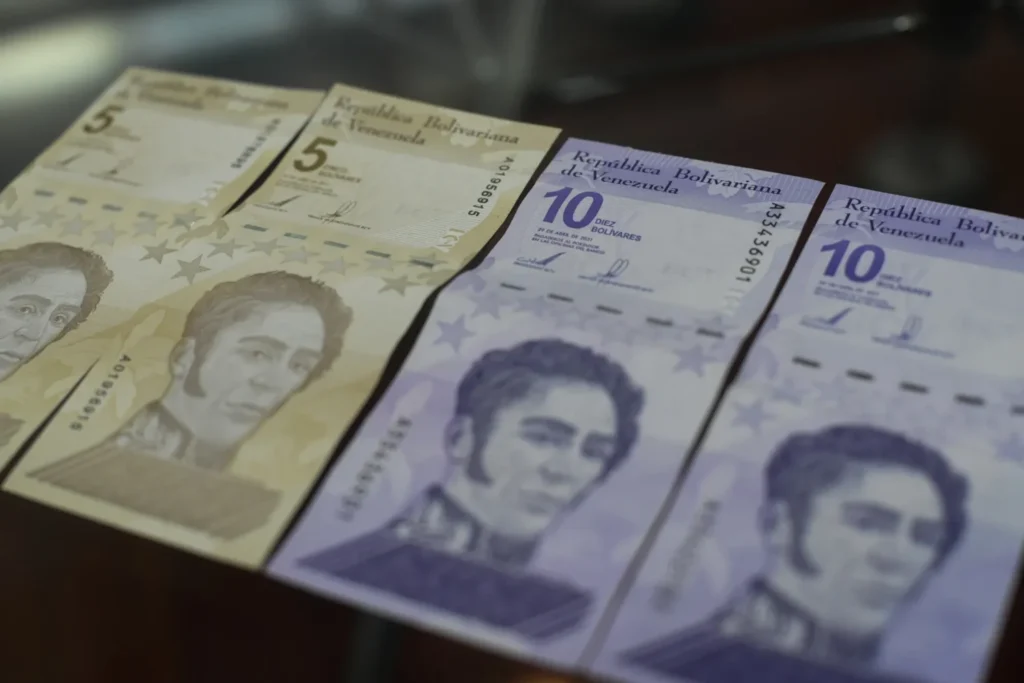
Historical Context: From Stability to Shaky Foundations
The bolívar’s story begins with promise. Introduced in 1879 under President Antonio Guzmán Blanco, it replaced the unstable venezolano and quickly gained renown for its strength.
By 1937, it traded at a fixed 3.18 to the U.S. dollar—a peg that held until 1941. Venezuela’s vast oil reserves, discovered in the 1920s, fueled a boom that made the bolívar the region’s most stable currency, often called the “strong bolívar” (bolívar fuerte, or Bs.F).This golden era ended on February 18, 1983—Black Friday—when panic selling triggered a sharp devaluation, marking the start of chronic instability.
Annual inflation climbed to 50-60% in the mid-1990s, peaking at 100% in 1996, amid a banking crisis and rising poverty. By 1998, GDP per capita had reverted to 1963 levels, erasing decades of progress.Hugo Chávez’s 1999 election ushered in the Bolivarian Revolution, promising redistribution of oil wealth. Early years saw inflation at 35.8% in 1998, dipping to 12.5% by 2001, but rising to 31.1% by 2003 amid social spending surges. Currency controls imposed in 2003 to curb capital flight fixed the rate at 1,600 bolívares per dollar, birthing a multi-tiered system that bred black markets and corruption.
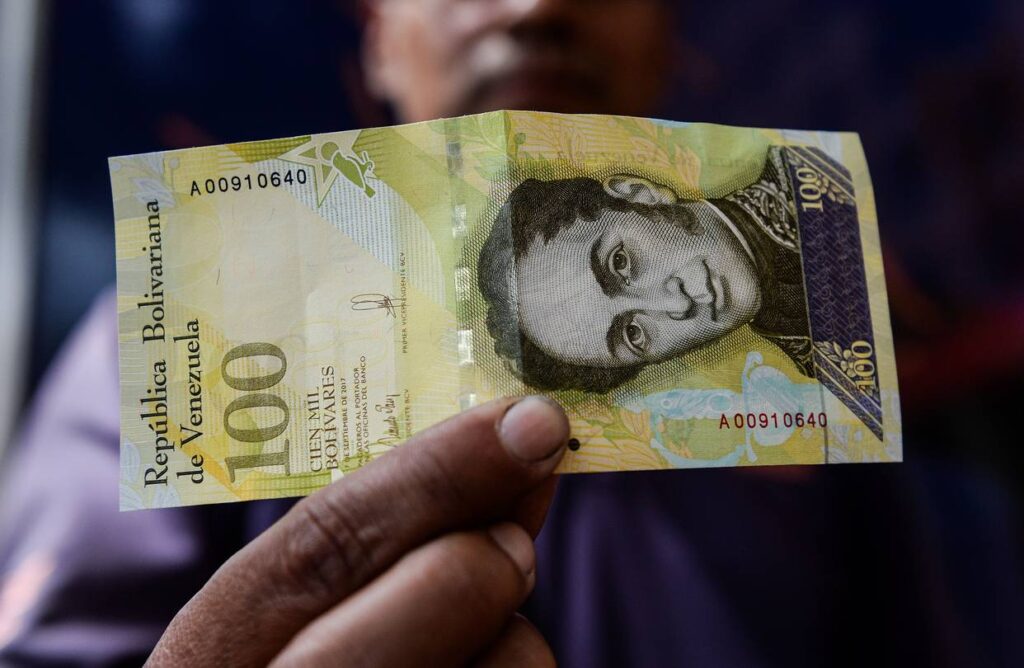
The Onset of the Crisis: Hyperinflation’s Grip (2014-2018)
The crisis ignited in late 2014 with oil prices crashing from over $100 to under $50 per barrel, slashing Venezuela’s primary revenue source—98% of exports were oil-derived. Under Nicolás Maduro, who succeeded Chávez in 2013, GDP contracted 6% in 2015, with inflation hitting 69%—the world’s highest. By 2016, the economy shrank 18.6%, and hyperinflation officially began in November, with rates soaring to 500% that year.Fiscal deficits ballooned as the government printed money to fund spending, exacerbating the spiral.
The bolívar’s informal rate plummeted, making it the world’s least valuable currency by September 2017. Devaluations followed: from 6.3 Bs.F per dollar in 2013 to 10 in 2016, and a staggering 99.6% drop to 25,000 Bs.F per dollar in February 2018. Inflation peaked at 63,000% in 2018, rendering the bolívar worthless—basic goods like milk cost a quarter of a minimum-wage earner’s monthly salary.
| Year | Official Exchange Rate (Bs.F per USD) | Annual Inflation Rate (%) | GDP Contraction (%) |
|---|---|---|---|
| 2014 | 6.3 | 69 | -3.9 |
| 2015 | 6.3 | 181 | -6.2 |
| 2016 | 10 | 500 | -17 |
| 2017 | 10 | 4,000 | -16 |
| 2018 | 25,000 (post-devaluation) | 63,000 | -18 |
Sources: IMF estimates and Central Bank of Venezuela data.
Currency Reforms: Desperate Measures Amid Despair (2018-2021)
To combat the chaos, Maduro unveiled aggressive reforms. On March 22, 2018, he announced a 1,000:1 revaluation, slashing five zeros from the bolívar to create the bolívar soberano (Bs.S), effective August 20. Pegged initially to the state-backed Petro cryptocurrency (valued at $60 per unit, backed by oil reserves), it aimed to restore trust and simplify transactions.
New denominations ranged from 2 to 500 Bs.S, with coins introduced for small values.Yet, the Petro was widely dismissed as a gimmick—opposition lawmakers called it an “illegal debt issuance.” Inflation persisted, hitting 1,000,000% by late 2018 per IMF projections.
Further devaluations ensued, and by 2021, another redenomination dropped six more zeros, birthing the bolívar digital (Bs.D) in October. This shifted focus to digital transactions to curb cash hoarding, but black-market premiums widened the official-informal gap.
| Reform Milestone | Date | Key Changes | Outcome |
|---|---|---|---|
| Bolívar Soberano Introduction | August 2018 | Remove 5 zeros; peg to Petro | Inflation unchanged; Petro rejected internationally |
| Bolívar Digital Launch | October 2021 | Remove 6 zeros; emphasize digital payments | Temporary stabilization, but devaluation resumed |
| Partial Dollarization Allowed | 2019-2020 | End some price controls; permit USD transactions | Reduced hyperinflation but entrenched dual-currency system |
The Fragile Reprieve and 2025 Resurgence (2022-2025)
The Plunge of the Bolívar: Venezuela’s Currency Catastrophe and Its Lasting EchoesIntroductionVenezuela’s bolívar, once a symbol of economic promise in one of Latin America’s wealthiest oil nations, has become a stark emblem of fiscal ruin.
Named after the liberator Simón Bolívar, the currency has endured a relentless devaluation that transformed it from a stable regional asset in the mid-20th century to one of the world’s least valuable circulating units by the 2010s.
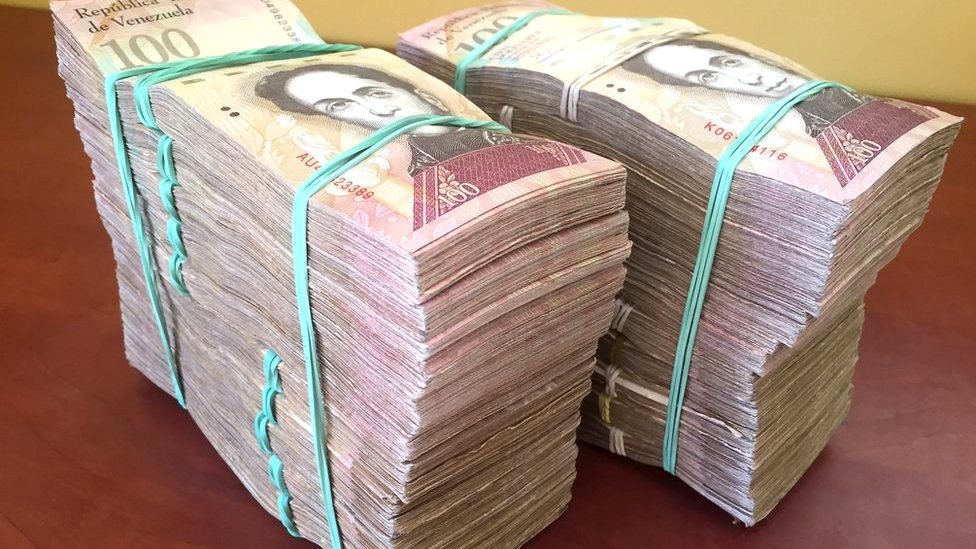
Hyperinflation, political turmoil, and mismanagement have driven its value into freefall, with the U.S. dollar fetching over 200 bolívares as of October 2025.
| Year | Official Exchange Rate (Bs.F per USD) | Annual Inflation Rate (%) | GDP Contraction (%) |
|---|---|---|---|
| 2014 | 6.3 | 69 | -3.9 |
| 2015 | 6.3 | 181 | -6.2 |
| 2016 | 10 | 500 | -17 |
| 2017 | 10 | 4,000 | -16 |
| 2018 | 25,000 (post-devaluation) | 63,000 | -18 |
IMF estimates and Central Bank of Venezuela data compiled from and .Currency Reforms: Desperate Measures Amid Despair (2018-2021)To combat the chaos, Maduro unveiled aggressive reforms. On March 22, 2018, he announced a 1,000:1 revaluation, slashing five zeros from the bolívar to create the bolívar soberano (Bs.S), effective August 20.
Pegged initially to the state-backed Petro cryptocurrency (valued at $60 per unit, backed by oil reserves), it aimed to restore trust and simplify transactions.
New denominations ranged from 2 to 500 Bs.S, with coins introduced for small values.Yet, the Petro was widely dismissed as a gimmick—opposition lawmakers called it an “illegal debt issuance.”
Inflation persisted, hitting 1,000,000% by late 2018 per IMF projections.
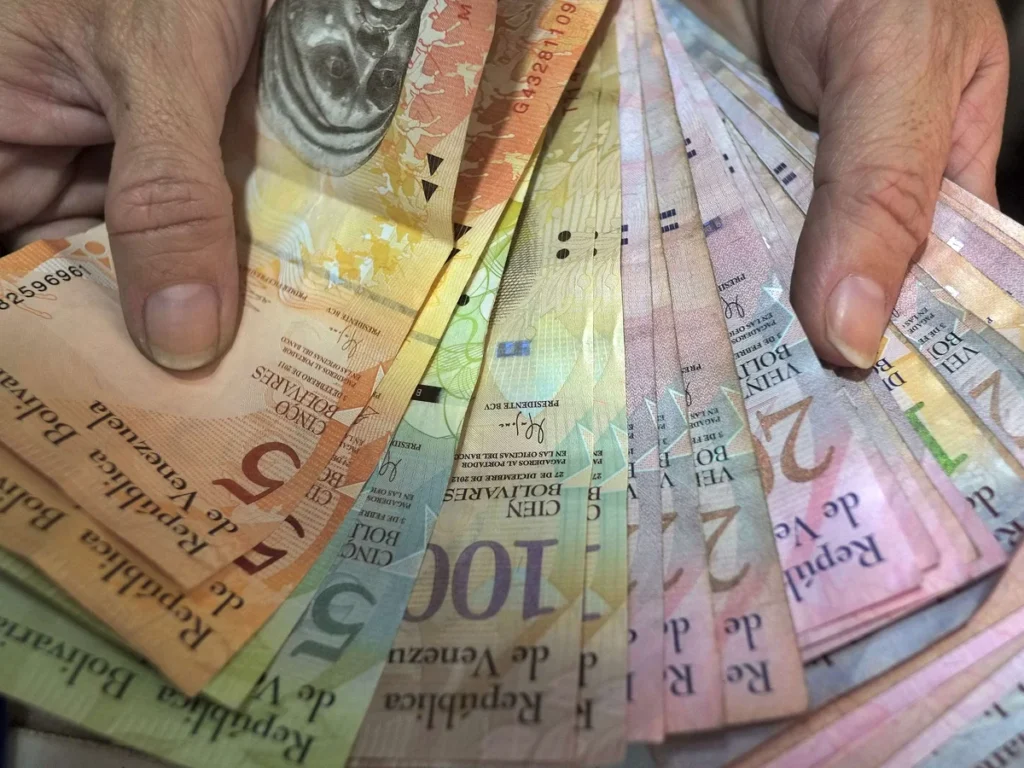
Further devaluations ensued, and by 2021, another redenomination dropped six more zeros, birthing the bolívar digital (Bs.D) in October.
This shifted focus to digital transactions to curb cash hoarding, but black-market premiums widened the official-informal gap.
| Reform Milestone | Date | Key Changes | Outcome |
|---|---|---|---|
| Bolívar Soberano Introduction | August 2018 | Remove 5 zeros; peg to Petro | Inflation unchanged; Petro rejected internationally |
| Bolívar Digital Launch | October 2021 | Remove 6 zeros; emphasize digital payments | Temporary stabilization, but devaluation resumed |
| Partial Dollarization Allowed | 2019-2020 | End some price controls; permit USD transactions | Reduced hyperinflation but entrenched dual-currency system |
- Oil Dependency: Oil accounts for 98% of exports; price volatility crippled revenues post-2014.
- Fiscal Irresponsibility: Deficits financed by money printing ignited hyperinflation.
- Currency Controls: Post-2003 tiers (e.g., DICOM, SIMADI) fostered black markets and corruption.
- Sanctions and Geopolitics: U.S. measures since 2017, intensified in 2025, halved oil output.
- Mismanagement: Price controls and nationalizations stifled production, causing shortages.
The bolívar’s story begins with promise. Introduced in 1879 under President Antonio Guzmán Blanco, it replaced the unstable venezolano and quickly gained renown for its strength. By 1937, it traded at a fixed 3.18 to the U.S. dollar—a peg that held until 1941. Venezuela’s vast oil reserves, discovered in the 1920s, fueled a boom that made the bolívar the region’s most stable currency, often called the “strong bolívar” (bolívar fuerte, or Bs.F).
This golden era ended on February 18, 1983—Black Friday—when panic selling triggered a sharp devaluation, marking the start of chronic instability. Annual inflation climbed to 50-60% in the mid-1990s, peaking at 100% in 1996, amid a banking crisis and rising poverty. By 1998, GDP per capita had reverted to 1963 levels, erasing decades of progress.Hugo Chávez’s 1999 election ushered in the Bolivarian Revolution, promising redistribution of oil wealth. Early years saw inflation at 35.8% in 1998, dipping to 12.5% by 2001, but rising to 31.1% by 2003 amid social spending surges. Currency controls imposed in 2003 to curb capital flight fixed the rate at 1,600 bolívares per dollar, birthing a multi-tiered system that bred black markets and corruption.
The Onset of the Crisis: Hyperinflation’s Grip (2014-2018)The crisis ignited in late 2014 with oil prices crashing from over $100 to under $50 per barrel, slashing Venezuela’s primary revenue source—98% of exports were oil-derived. Under Nicolás Maduro, who succeeded Chávez in 2013, GDP contracted 6% in 2015, with inflation hitting 69%—the world’s highest. By 2016, the economy shrank 18.6%, and hyperinflation officially began in November, with rates soaring to 500% that year.Fiscal deficits ballooned as the government printed money to fund spending, exacerbating the spiral. The bolívar’s informal rate plummeted, making it the world’s least valuable currency by September 2017.
Devaluations followed: from 6.3 Bs.F per dollar in 2013 to 10 in 2016, and a staggering 99.6% drop to 25,000 Bs.F per dollar in February 2018. Inflation peaked at 63,000% in 2018, rendering the bolívar worthless—basic goods like milk cost a quarter of a minimum-wage earner’s monthly salary.
| Year | Official Exchange Rate (Bs.F per USD) | Annual Inflation Rate (%) | GDP Contraction (%) |
|---|---|---|---|
| 2014 | 6.3 | 69 | -3.9 |
| 2015 | 6.3 | 181 | -6.2 |
| 2016 | 10 | 500 | -17 |
| 2017 | 10 | 4,000 | -16 |
| 2018 | 25,000 (post-devaluation) | 63,000 | -18 |
IMF estimates and Central Bank of Venezuela data.
Currency Reforms: Desperate Measures Amid Despair (2018-2021)To combat the chaos, Maduro unveiled aggressive reforms. On March 22, 2018, he announced a 1,000:1 revaluation, slashing five zeros from the bolívar to create the bolívar soberano (Bs.S), effective August 20. Pegged initially to the state-backed Petro cryptocurrency (valued at $60 per unit, backed by oil reserves), it aimed to restore trust and simplify transactions.
New denominations ranged from 2 to 500 Bs.S, with coins introduced for small values.Yet, the Petro was widely dismissed as a gimmick—opposition lawmakers called it an “illegal debt issuance.” Inflation persisted, hitting 1,000,000% by late 2018 per IMF projections. Further devaluations ensued, and by 2021, another redenomination dropped six more zeros, birthing the bolívar digital (Bs.D) in October. This shifted focus to digital transactions to curb cash hoarding, but black-market premiums widened the official-informal gap.
| Reform Milestone | Date | Key Changes | Outcome |
|---|---|---|---|
| Bolívar Soberano Introduction | August 2018 | Remove 5 zeros; peg to Petro | Inflation unchanged; Petro rejected internationally |
| Bolívar Digital Launch | October 2021 | Remove 6 zeros; emphasize digital payments | Temporary stabilization, but devaluation resumed |
| Partial Dollarization Allowed | 2019-2020 | End some price controls; permit USD transactions | Reduced hyperinflation but entrenched dual-currency system |
The Fragile Reprieve and 2025 Resurgence (2022-2025) Post-2021, orthodox policies—credit curbs, dollar injections, and public spending cuts—yielded modest gains. Inflation fell from millions of percent to 32% projected for early 2025, with GDP growing 4% in 2024. Transactional dollarization became widespread, stabilizing prices as the USD benchmarked commerce.But 2025 shattered this calm. U.S. sanctions intensified: Chevron’s license suspension in March slashed oil revenues, while 25% tariffs on Venezuelan hydrocarbon trade forced discounted sales. The Central Bank reduced forex sales by 14% year-over-year, sparking devaluation fears.
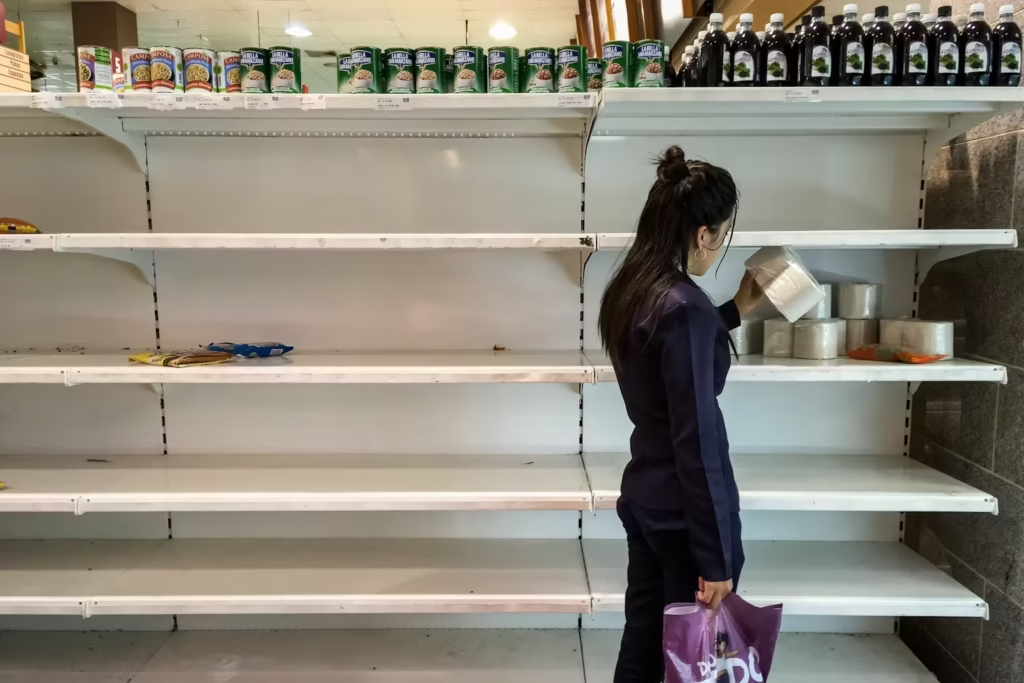
The official rate jumped 91% by March, surpassing 100 Bs.D per USD in June, while the black-market rate spiked 160%.By April, inflation surged to 136%, climbing to 172% by month’s end, driven by 21.72% monetary expansion and opacity in data reporting. The bolívar lost 13% in March alone, with liquidity floods fueling speculation. As of October 18, 2025, 1 USD equals 205.42 VES, up from 36.5 in mid-2024—a 463% plunge. Over the past year, the bolívar weakened 395.5%. In September 2025, exchanges pivoted to dollar-tied cryptocurrencies like USDT amid dollar scarcity, highlighting the bolívar’s obsolescence.
Causes of the Fall: A Toxic Brew
The bolívar’s collapse stems from structural frailties and policy blunders:
- Oil Dependency: Oil accounts for 98% of exports; price volatility crippled revenues post-2014.
- Fiscal Irresponsibility: Deficits financed by money printing ignited hyperinflation.
- Currency Controls: Post-2003 tiers (e.g., DICOM, SIMADI) fostered black markets and corruption.
- Sanctions and Geopolitics: U.S. measures since 2017, intensified in 2025, halved oil output.
- Mismanagement: Price controls and nationalizations stifled production, causing shortages.
Experts like Asdrúbal Oliveros of Ecoanalítica note the 2025 gap between official (91% rise) and black-market (160% rise) rates as a “perfect storm” of reduced forex and sanction shocks.
Effects: A Nation Unraveled
The fallout is catastrophic. GDP contracted 75% from 2013-2021, rivaling wartime collapses like Bosnia’s. Poverty hit 96% in 2018; by 2025, salaries remain Latin America’s lowest, with inflation eroding gains.
Shortages of food, medicine, and power persist, fueling disease and mortality spikes.Over 7.7 million Venezuelans—25% of the population—have emigrated since 2014, creating a regional refugee crisis.
Crime surged, and inequality tops the Americas, despite 2022-2024 poverty dips. In 2025, household goods rose 16.7% in March alone, deepening vulnerability.Devaluation’s irony: It fails to boost exports, as oil prices are dollar-denominated, while inflating imports and eroding purchasing power.
The Venezuelan Bolívar in 2025: A Year of Resurgent Instability
As of October 18, 2025, the Venezuelan bolívar (VES) remains one of the world’s most depreciated currencies, emblematic of the country’s entrenched economic woes. Despite a brief period of stabilization in the early 2020s, the bolívar has resumed a sharp decline this year, driven by renewed U.S. sanctions, falling oil revenues, and expansive monetary policies.
The official exchange rate hit 205.418 VES per USD on October 18, marking a staggering 395.5% weakening over the past 12 months and a 19.4% drop in the last month alone. Inflation has surged back into triple digits, with annual rates reaching 172% by April, eroding purchasing power and exacerbating poverty.
The economy, heavily reliant on oil, faces contraction risks, with GDP growth projections slashed amid blackouts, supply shortages, and political repression.This snapshot draws on the latest data to assess the bolívar’s precarious state, its macroeconomic context, and implications for Venezuela’s 7.7 million citizens—many of whom continue to grapple with hyperinflation’s scars.
Exchange Rate Dynamics
The bolívar’s value has plummeted throughout 2025, reversing gains from partial dollarization in prior years. Key metrics as of mid-October:
- Official Rate: 205.418 VES/USD (October 18), up from ~36.5 VES/USD in mid-2024—a 463% depreciation. It crossed 100 VES/USD in June and accelerated post-summer.
- Recent Trends: The rate fell to 193.058 VES/USD on October 15 (a 2.92% daily drop) before rebounding. Weekly fluctuations ranged from 195 to 205 VES/USD, with the lowest point at ~0.0052 USD per VES on October 10.
- Black Market Premium: Parallel rates trade at a 20-30% premium to official figures, fueled by dollar scarcity and forex restrictions. In September, traders shifted to dollar-pegged cryptocurrencies like USDT for hedging.
| Date/Metric | VES per USD | Change (YoY) | Notes |
|---|---|---|---|
| Mid-2024 | 36.5 | – | Baseline stability |
| June 2025 | >100 | +174% | Resumed depreciation |
| October 15, 2025 | 193.058 | +395.5% | Daily -2.92% |
| October 18, 2025 | 205.418 | +463% (from mid-2024) | Peak weekly high |
The Central Bank of Venezuela (BCV) maintains opacity, halting detailed forex data releases since late 2024, which amplifies speculation.
Inflation Pressures
Inflation, which peaked at 63,000% in 2018, had cooled to ~60% by end-2024 but roared back in 2025. Government money printing (21.72% liquidity growth) and sanction-induced revenue shortfalls reignited the spiral:
- Annual Rate: 172% in April (up from 136% in March), with monthly spikes of 13.1% (March) and 18.4% (April).
- Projections: IMF estimates average 150% for 2025, though independent observers like the Venezuelan Finance Observatory (OVF) warn of 200%+ if oil prices dip further. Earlier forecasts pegged it at 71.65%, but Q1 data disproved optimism.
- Sector Impacts: Household goods rose 16.7% in March; food and essentials now consume 89% of household budgets, per ECLAC.
This echoes hyperinflation tactics but at moderated levels, with prices doubling every few months. The BCV’s silence on data since October 2024 breeds distrust, pushing reliance on black-market trackers.
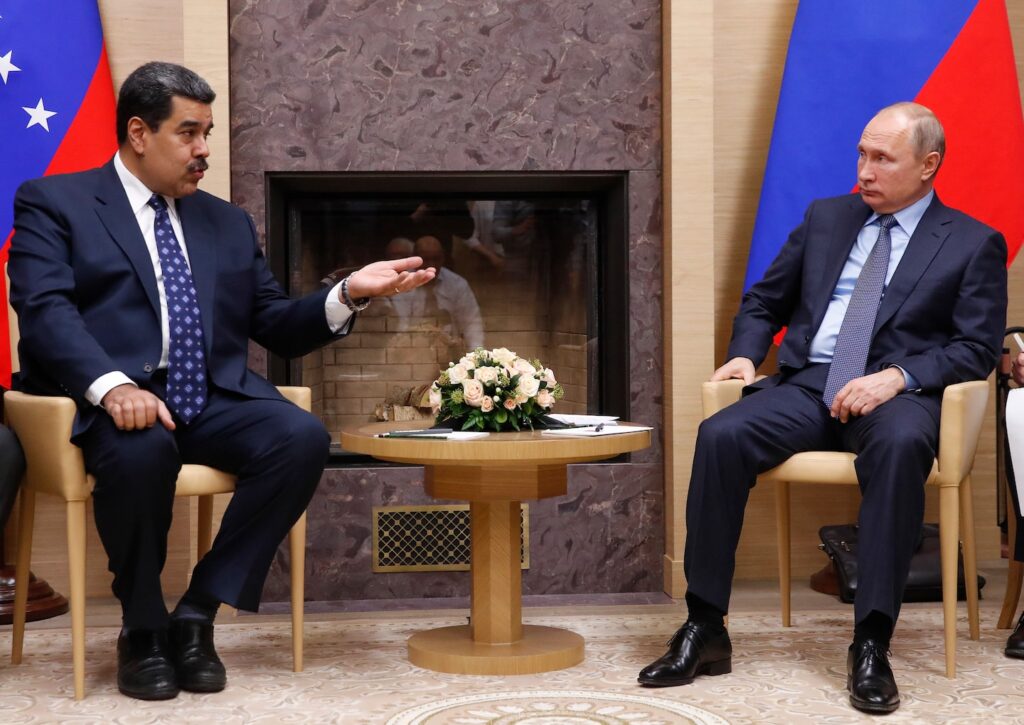
Economic Backdrop
Venezuela’s economy, 98% oil-dependent, contracted 75% from 2013-2021 and has limped toward recovery. 2025 marks a setback:
- GDP Growth: Q1 saw a mere 1.4% rise (per Cedice), or 2.7% contraction (OVF), contrasting government claims of 4.5%. IMF projects 3% for the year, but sanctions could yield -4%. ECLAC forecasts 3.1% overall, buoyed by oil output at 874,000 bpd (up 14.5% YoY).
- Budget and Revenues: 2025 budget at $22.7 billion (up 11% YoY), with PDVSA funding 53% ($10.1 billion, down from $11.9 billion in 2024). Taxes cover 28%; mining/loans fill gaps.
- Challenges: U.S. sanctions (e.g., Chevron license suspension) cost $77 million daily in lost oil revenue since 2017 (213% of GDP). Blackouts recur, FDI is negligible, and unemployment hovers at ILO’s 2023 levels (~10%, underreported). Remittances and mining prop up informal sectors.
| Indicator | 2024 Estimate | 2025 Projection (Mid-Year) | Key Driver |
|---|---|---|---|
| GDP Growth | 3-4% | 1.4% (Q1) to 3% (annual) | Oil recovery vs. sanctions |
| Oil Production | 874,000 bpd | Stable/slight decline | PDVSA output |
| Unemployment | ~10% | Rising | Recession risks |
| Poverty Rate | ~80% | >85% | Inflation erosion |
Transactional dollarization persists (80%+ of payments), but a “remarkable reversal” in bolívar use outside tourism signals forced adaptation.
Key Drivers of Instability
- Sanctions and Geopolitics: U.S. measures halved oil exports; BRICS entry vetoed by Brazil in October 2024.
- Oil Volatility: Prices fell post-2024 highs; discounted sales due to 25% tariffs.
- Policy Missteps: Floating the bolívar in mid-October 2024 triggered depreciation; fiscal deficits funded by printing.
- Political Turmoil: Maduro’s disputed July 2024 re-election led to 2,000+ arrests, stifling investment.
Human and Social Toll
- Poverty and Migration: 96% extreme poverty risk; 7.6 million need aid (HNO 2025). Food insecurity affects 89% of households; basic basket costs $539.79 USD monthly.
- Emigration: 7.7 million fled since 2014; remittances (~$5 billion annually) are a lifeline.
- Inequality: Highest in Americas; crime and GBV surge amid unrest.
Outlook: Bleak Horizons
Experts like Ecoanalítica predict 100%+ inflation and GDP contraction without sanction relief or diversification.
Dollarization or IMF restructuring could help, but Maduro’s authoritarianism blocks paths. As the bolívar trades at ~0.005 USD, Venezuela’s crisis—economic and humanitarian—deepens, with recovery hinging on improbable global shifts. The clock ticks: at 205 VES/USD, everyday survival demands ingenuity amid despair.

Comments